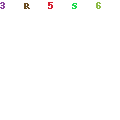This book was first published in 1855. The copy I picked up doesn't have a publishing date in it so I'm not exactly sure which edition I have here. It looks similar to the one I've pictured (published around the year 1900) except the girl on the cover art of my book isn't walking a dog. The girl on my book is much younger and is walking along holding some books. It looks as if she is wearing early 1900's garb though so I suspect my copy was published sometime in the early turn of the century. No matter what the year it was published, it looks old and that always makes me happy. (I'd much rather read an older copy of a book than a newer one. How about you?)
If you look up Goodread opinions on this title, you might be disinclined to read The Flower Fables
The Flower Fables
In this book you'll find a collection of short stories about fairies who are out to teach children of the world how to be loving, kind, and self-sacrificial. The stories very moralistic as would have been more common for stories written during that time period. This fact certainly doesn't make them bad stories which ought to be avoided, but it does make them seem a bit forcefully cheesy to a more modern audience. I think it's worth noting that most of the people who shared on Goodreads that they didn't like this book seem to be the type who aren't fond of having morals defined for them in the first place. As a result, I'm not totally sure how much attention I should pay to their opinion, regardless. I do believe that there is a set standard of right and wrong defined for us to live by and therefore it doesn't bother me to read stories which promote such things, generally speaking. (I just like such books to be well written and clever.) Again, we do not define right for ourselves, but it has been defined on our behalf and comes from a source outside of ourselves. (Hint: I don't think fairies are that source.)
The book opens to a scene between the fairies which takes place at the end of a day. The fairies are all relaxing under the flowers when the Fairy Queen suggests that they take turn telling stories which they have heard during the day and sharing what they had learned. Each little elf takes a turn sharing a story of their own. My favorite was the story of Lily-Bell and Thistledown. Thistledown is a bad little fairy who can't seem to do anything right. He pokes at birds and pulls open flower buds before they are ready to bloom. His friend Lily-Bell tries to help him to do right but Thistledown is quite bent on committing mean acts on his fellow creatures. Eventually though he comes to the realization that he needs the help of the birds and bees and has to go and make amends for his bad behavior. Of course, he learns that love and kindness are far better attributes that anger and strife. All of the stories sort of follow along the same lines but I did think there was enough variety between the tales to keep them interesting.
This is a short book that takes all of 2 total hours of your reading time. I don't begrudge it that. The chances are slim that I would have spent a week on this book but it's a fun one to be in the know about and to have read. No, it's not one of her greater works but it's interesting all of the same. I likely won't read it again but I'll stick it up on the shelf for the kids to read in the future if they would like to do so.








6 comments:
I hadn't heard of the book before either, but then again, I'm not the greatest export on Louisa May Alcott never having read any of her books.
@Mark - Well, I don't know that that makes me feel any better then. :)
No, I had indeed not heard of it, and I thought I had read almost everything of Alcott's! It would be interesting just in the body of her work, to see how she developed, even aside from the stories.
No, never heard of it and I have ready Alcott. :)
I didn't remember the name of the book, but I did know of it from the biography I read last year of LMA. I thought it was of fairy tales...shows how much I remember!
Sounds like a good one to own and read...just because it was her first.
I've never heard of it either but I'd love to read it sometime!
Post a Comment